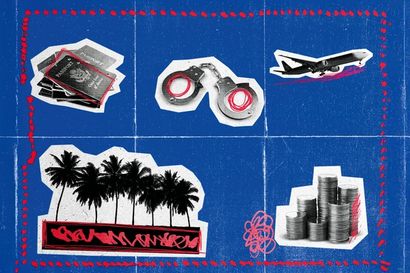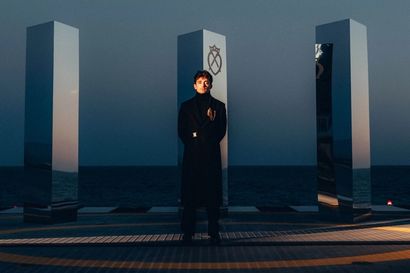Based in Miami, Dan Alva grew up in a very handy, practical family. Spending much of his childhood tinkering in the garage with his father, an engineer, he was always working on cars or bicycles, learning how to use tools and using his hands. Slowly but surely, he discovered photography, documenting nights out and skateboarding with friends, before starting a career in graphic design, then advertising. Over the past 8 years his focus turned to oil paintings, recreating the Masters in a similar style to how the Old Masters painters would have painted them, but with his own contemporary twist. His new collection of 10 large-scale paintings are currently being shown as a solo online exhibition at Maddoxgallery.com.
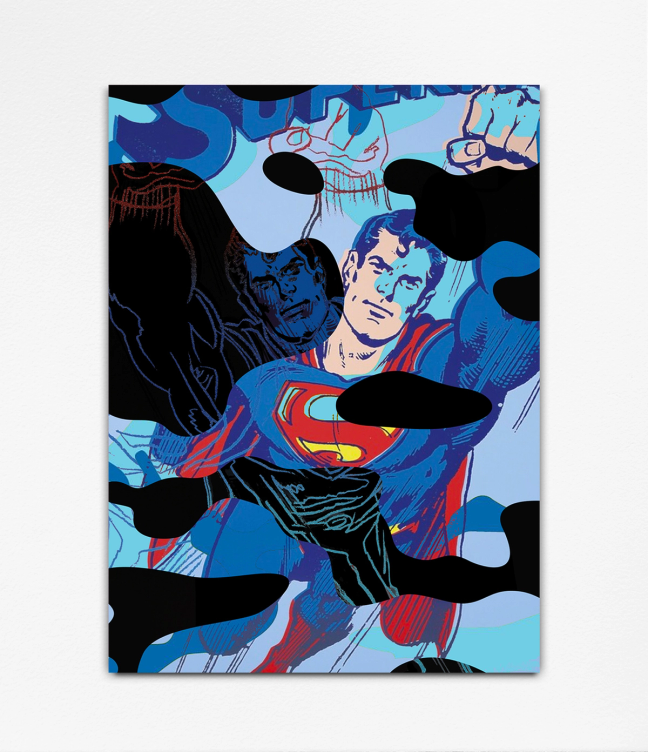
Made Man
JW: Tell me when you first became interested in art and what types/genres of art and media you were drawn to?
DA: I always felt I wanted to go into a creative industry, so I could wear a T-shirt to work and not a suit and tie. That was my first goal! Photography was a big way in on the creative aspect, and I started using digital cameras when they first came out, then I discovered film, and learned about the dark room and the development process. It was a class I could take in school and it didn’t even feel like school, as I was being graded on photographs, which I loved. So for the first time I was getting good grades in something I was enjoying doing. This then led me to graphic design because of the editing process and photoshop, and from graphic design I went into advertising. In the past 10 years I started to focus more on personal works in the studio, and I had a sort of man cave in a warehouse space called ‘The Truth’, where I’d hang out with some other creative friends, and slowly but surely we started to build our works and it was very collaborative. It became like a clubhouse for creatives, where we could get together and build and have a space where there were no rules. That really opened my eyes up to sculptures, then I started to get into painting and canvases, and I try to replicate it but put my own expression on it.

JW: How has your own style developed over time, and how would you describe your work?
DA: I love getting things done and moving on. So, for me to stick to one series is already a huge endeavour in itself! But I haven’t got bored of this style yet. Not only is it successful, but I genuinely want to do it. I envision my work in a modern, beachside setting surrounded by lots of natural light, and I like to play with giving tradition a modern twist. I don’t want my paintings to be a like a copy of a Picasso or a Van Gogh, they have another layer to them. I quite like to trick the viewer a little bit to keep them thinking about what exactly the format of the painting is. This is the style that I’ve developed, and I want to keep pushing this.
JW: What was your inspiration and motive for ‘remastering’ masters, merging your own distinctive style with well-known historical works?
DA: I have always seen these works in traditional museums, with big, thick, gaudy frames on them, and it’s beautiful to see them in these spaces, as I feel that’s where they should live. But I’ve always thought, what if you were to grab these works and put them in a modern space. So, the concept wasn’t to preserve them, but I did want them to live on in our era, in the culture we’re living in, with everything that’s evolving. The mission as far as working with old masters is firstly, that I could work with paintings over 100 years old and not have to worry about copyright. Secondly, I wanted to respect the masters but put my own modern spin on them to give them a more contemporary relevance. There is so much history and authenticity and so many stories behind the original paintings – why they were painted and what the significance is – so I try to find out as much as possible about the masters before I work with them.
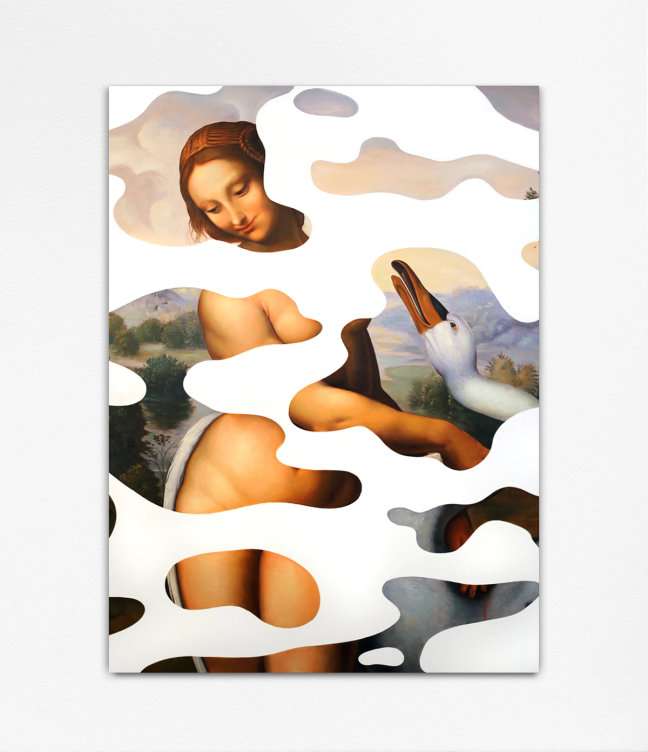
Clean Sneak
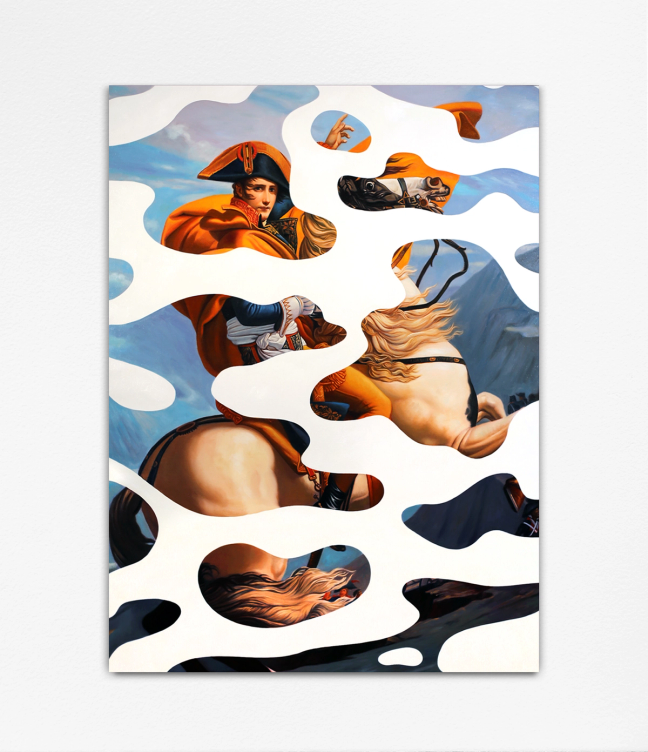
Burn The Ships
JW: Your new exhibition Fortune Favours the Bold has just launched at Maddox Gallery – what is the key message of the show?
DA: There’s a range of work, and I’ve really pushed some of the pieces with a sense of colour, such as the Girl with the Pearl Earring (Bada Bing Bada Boom) and the Venus version (Put the Screws On), which feature spin painting background, an homage to Damien Hirst, one of my favourite artists. There is lots of colour and lots of pop, with the spin painting technique taking the viewer’s eye right to the middle of the canvas. There is also a series of Warhol’s I did on the side, which I’ve brought to life, and if you know you know – they’re definitely Warhol-esque (Call the Consigliere, Either You’re Somebody or You Ain’t Nobody, Leave the Gun – Take the Cannoli, Made Man). There is no set look, but the camouflage motif runs through all the pieces, and that was the goal, to embrace the camo pattern. But I did experiment with sets of two, so the customer could have the option of a white version or a colourful version.
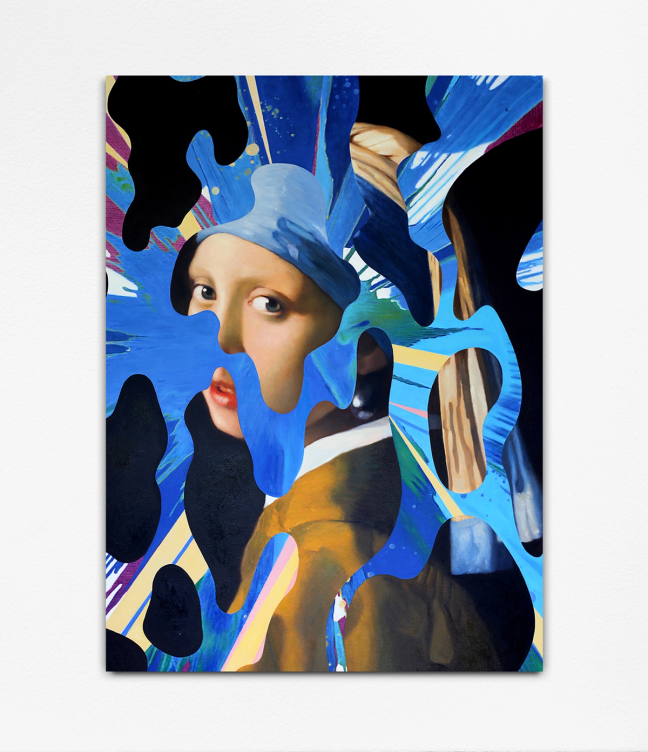
Bada Bing Bada Boom
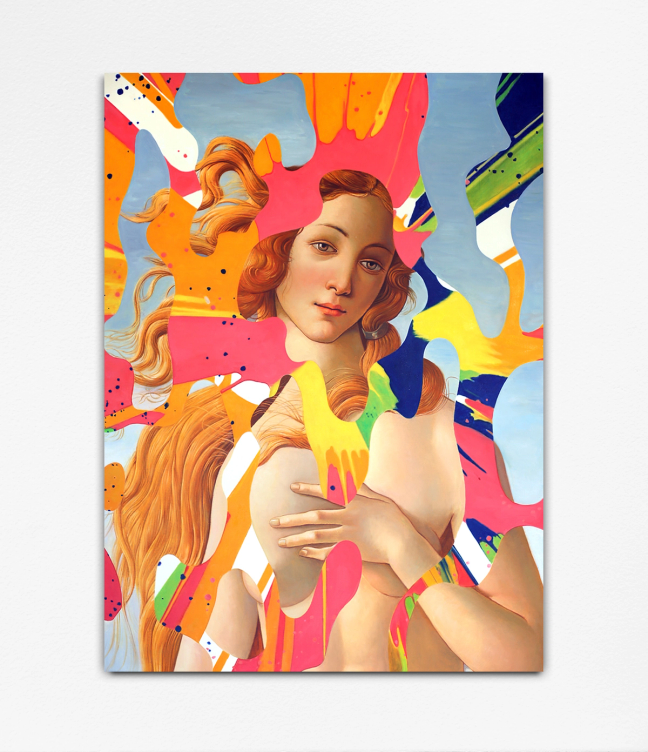
Put the Screws On
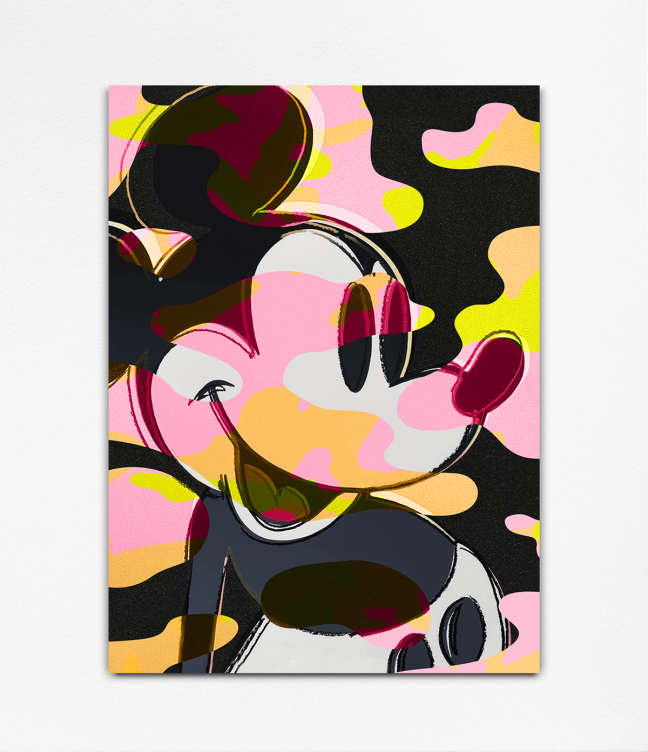
Call the Consigliere
JW: How does the fashion world impact your work?
DA: I’m pretty obsessed with the windows of fashion houses in New York, especially during the holiday season, and how they go above and beyond to make art pieces behind the glass. I’ve always been interested in how clothing or luggage are displayed surrounded by objects, and there’s a style and a concept behind it. Even the latest Louis Vuitton show that happened this week with Pharrell – it’s a perfect example of a traditional fashion house with a very contemporary approach, with the old LV luggage featuring a camouflage pixel effect. It has the history of Louis Vuitton as well as a very modern take to it, and I tried to go in that direction with my paintings as well. Fashion is always ahead of the trends, so when it comes to colour palettes, patterns and different ways of styling things, I find a lot of inspiration in fashion.
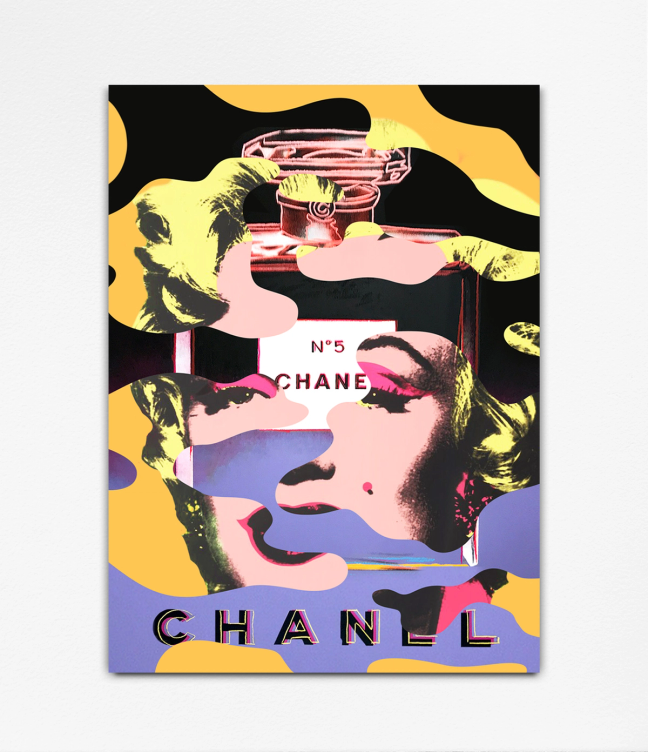
Either You’re Somebody or You Ain’t Nobody
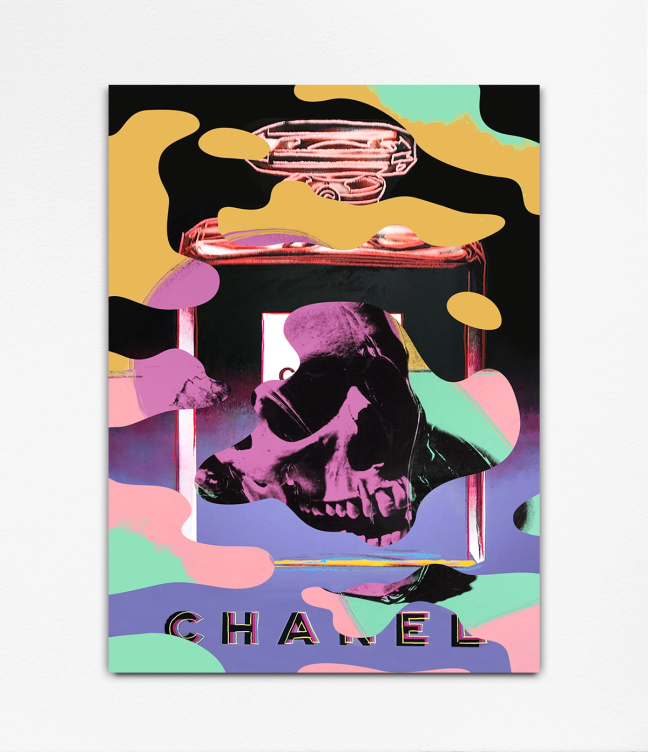
Leave the Gun Take the Cannoli
JW: Talk me through your creation process, from idea conception to finished piece?
DA: Being a graphic designer by trade, I use computer software before I get to the final image. As I’m concerned about where the paintings land, I do like to see the final image before I get to paint, so I find it important to create the piece on Photoshop first, putting images together, and one painting might have 10 different digital versions that I’ve played with, and landed on one final version. I should want to hang it in my house. The process is usually everything from research to sketches to photoshop, then finally painting.
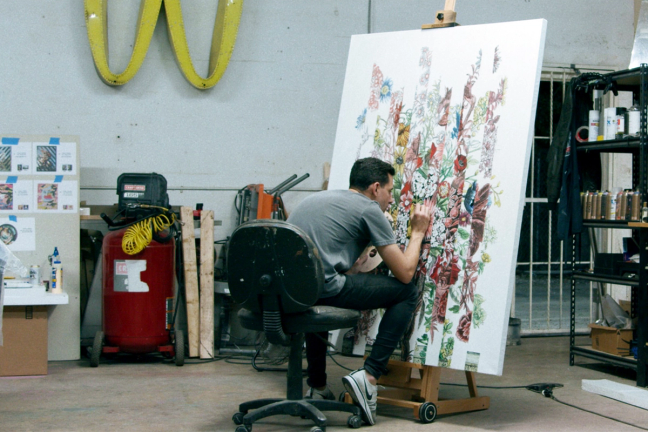
JW: Do you have a favourite piece in the exhibition, and why?
DA: Blow One Down is a classic painting of a princess in an incredible blue dress with a lot of lace and jewellery. I’ve used this painting quite a bit, but I’ve done a different take on it by bringing a blue camo pattern above it, so she’s kind of behind a window, which I find interesting. Then I took birds above from a wallpaper, and I tweaked some colours, and it felt cohesive. The other one I really like, which is the cousin version of that painting, is Out on the Roof and it’s a very old painting of a depiction of a warrior, in which he’s wearing a robe, and I brought in the green colour palette, and introduced the birds with some dragonflies to add more detail, and these two are my favourite paintings because of how clean they are, and because of the use of single colours, which I rarely do.
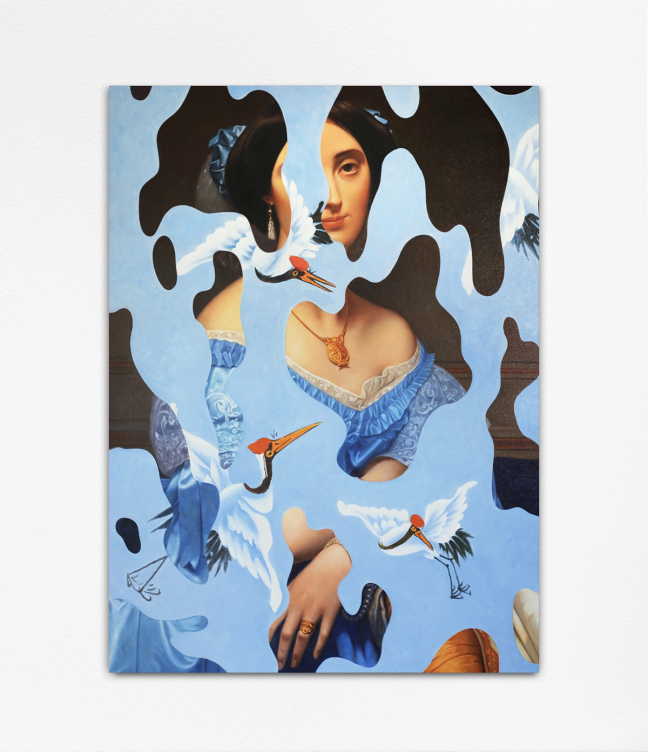
Blow One Down
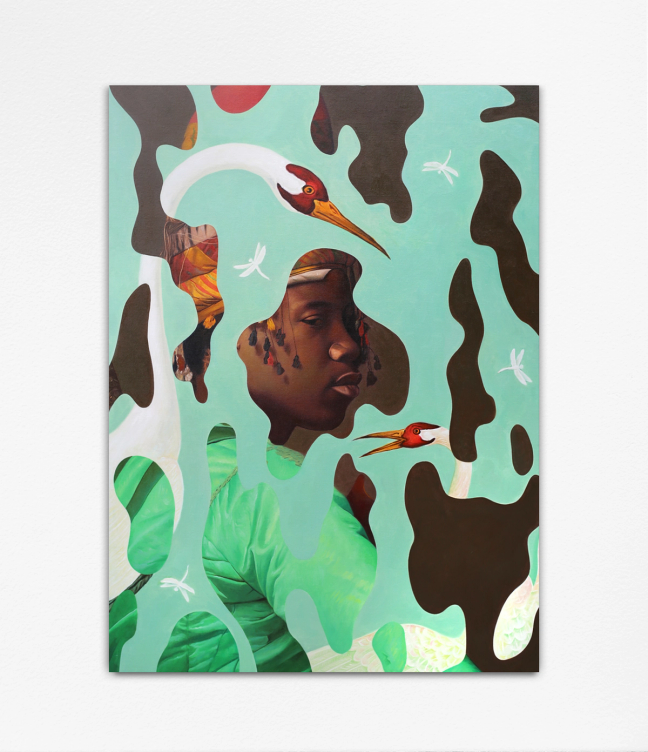
Out On The Roof
Curious about art? Explore our advice on investing in contemporary art.
Become a Gentleman’s Journal member. Find out more here.

Become a Gentleman’s Journal Member?
Like the Gentleman’s Journal? Why not join the Clubhouse, a special kind of private club where members receive offers and experiences from hand-picked, premium brands. You will also receive invites to exclusive events, the quarterly print magazine delivered directly to your door and your own membership card.

